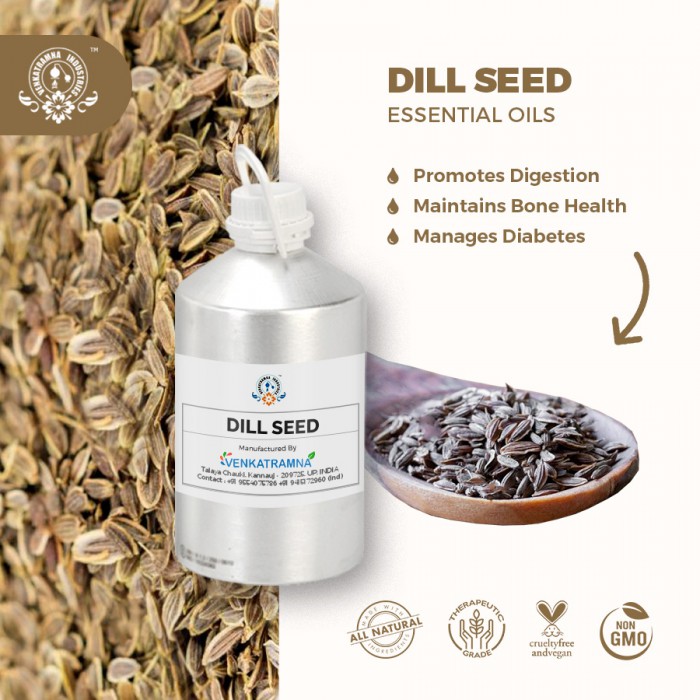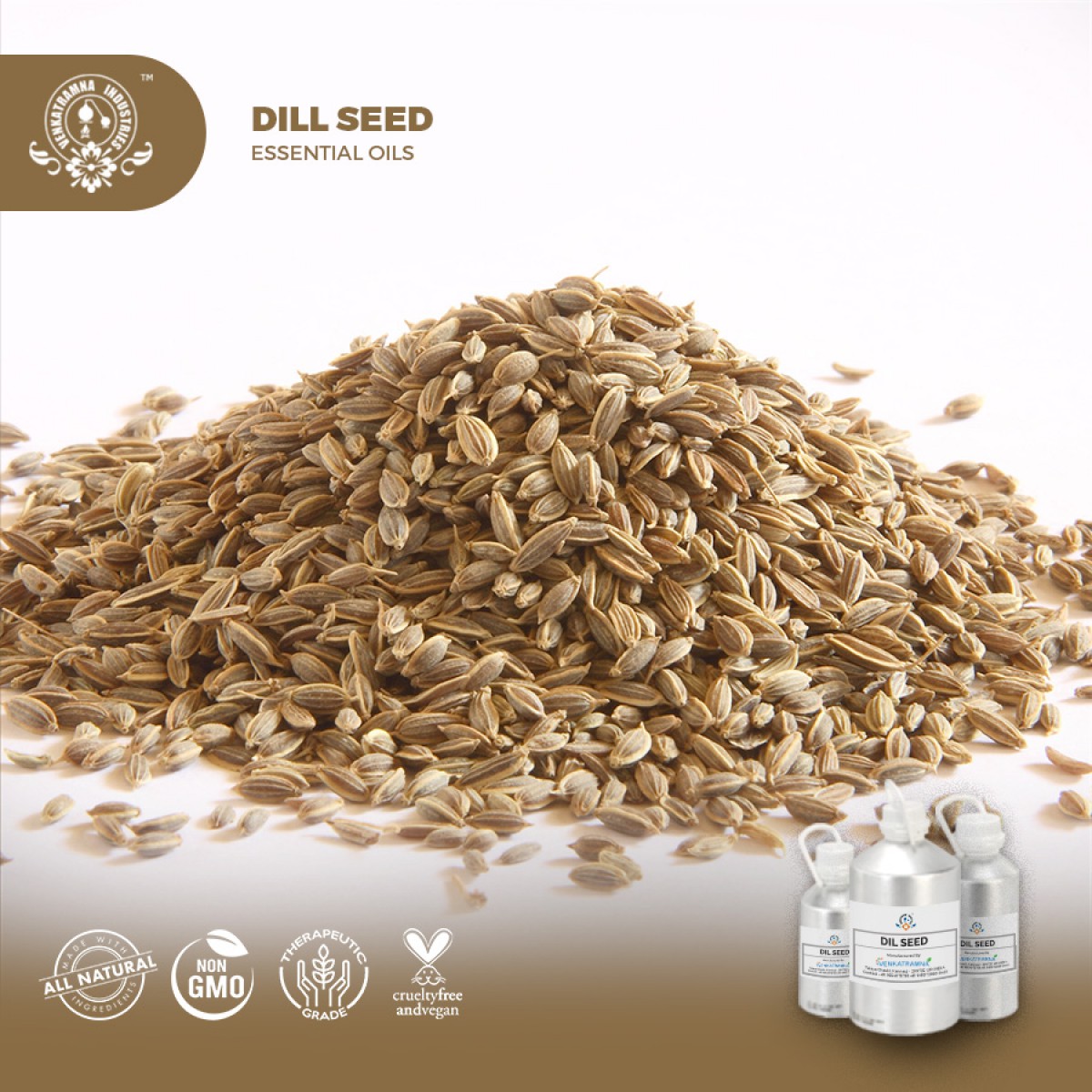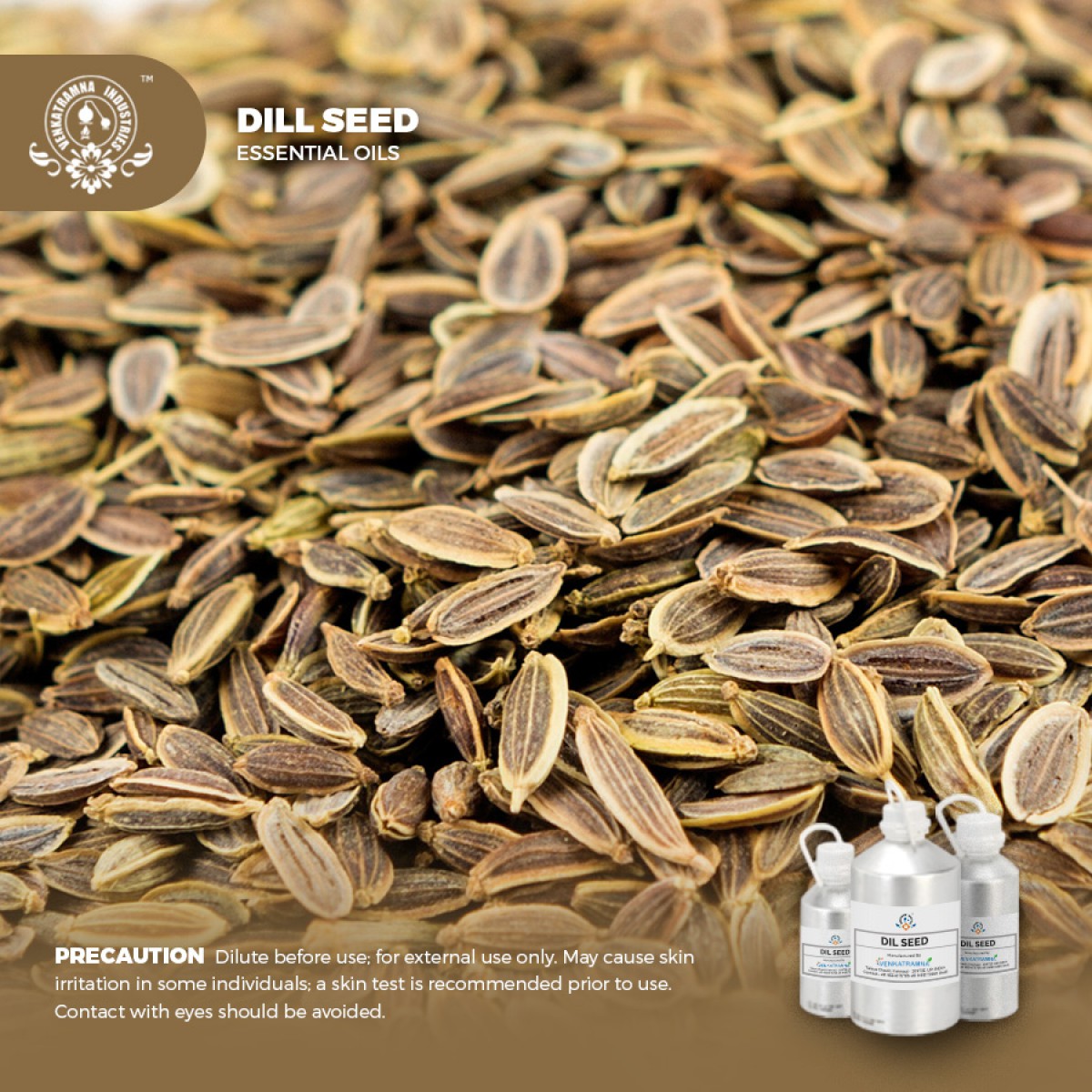Botanical Name: Anethum sowa Roxb Common name: Sowa, Soya, Dill, Garden dill, Anet, Sa Read More
|
Botanical Name: |
Anethum sowa Roxb |
|
Common name: |
Sowa, Soya, Dill, Garden dill, Anet, Sata pushpa |
|
Plant family: |
Apiaceae |
|
Genus: |
Anethum |
|
Appearance/Color: |
A thin, clear,
pale yellow liquid that darkens over time. |
|
Odor: |
A fresh, herbaceous scent that is gentle, warm and spicy. |
|
Blends With: |
Other spice
oils, Elemi, Peppermint, and Caraway. |
|
Origin: |
India` |
|
Source: |
Seeds |
|
Method of
Extraction: |
Steam Distillation |
The genus name Anethum is derived from
Greek word aneeson or aneeton, which means strong smelling. Its common use in
Ayurvedic medicine is in abdominal discomfort, colic and for promoting
digestion. Ayurvedic properties of shatapushpa are katu tikta rasa, usna virya,
katu vipaka, laghu, tiksna and snigdha gunas. It cures ‘vata’, ‘kapha’, ulcers,
abdominal pains, eye diseases and uterine pains.
Anethum sowa L. (Bengali-Shulfa) belonging to the family Apiaceae (Umbelliferae), comes under genus Anethum and it is an annual and winter spice crop in Bangladesh. It is mostly grown in the northern part of Bangladesh. A variant called Indian dill or sowa (Anethum sowa Roxb.) is largely cultivated in Bangladesh, India, Egypt and Japan. Indigenous people consume it as a spice for a flavoring agent in food preparation. The herb grows ordinarily 2–2.5 ft. in height with small feathery leaves, tapped and branched roots. The chemical composition of the essential oil of the two chemotypes i.e. European dill (Anethum graveolens L.) and Indian dill (Anethum sowa L.) are differentiated mainly by the apiol and carvone content. Anethum sowa is rich in apiol whereas Anethum graveolens is rich in carvone. The typical flavor of dill herb oil is due to ?-phellandrene, limonene and dill ether (anethofuran). The green herb, seeds and its roots are used as folkloric medicine e.g. aromatic, carminative especially useful in the treatment of flatulence, colic and hiccups of infants and children. Recently, it has been reported that seed essential oils are the potential source of antioxidant and also have antimicrobial and antispasmodic properties.
DISCLAIMER
The complete range of conditions
or methods of use are beyond our control therefore we do not assume any
responsibility and expressly disclaim any liability for any use of this
product. Information contained herein is believed to be true and accurate however,
all statements or suggestions are made without warranty, expressed or implied,
regarding accuracy of the information, the hazards connected with the use of
the material or the results to be obtained from the use thereof. Compliance
with all applicable federal, state, and local laws and local regulations
remains the responsibility of the user.
The FDA has not evaluated the
statements on this website. No claims are made by Venkatramna Industries as to
the medicinal value of any products from vriaroma.com or by us. The information
presented here is for educating our customers about the traditional uses of
essential oils and is not intended to diagnose, treat, cure, or prevent any
disease. You are responsible for understanding the safe application of these products.
If you have any questions, please call or email us for further information.
As per NAHA guidelines, New Directions Aromatics
(NDA) does not recommend the ingestion of essential oils. It is imperative to
consult a medical practitioner before using Essential Oils for therapeutic
purposes. Pregnant and nursing women and those taking prescription drugs are
especially advised not to use this product without the medical advice of a
physician. The oil should always be stored in an area that is inaccessible to
children, especially those under the age of 7.
The root part of Anethum
sowa L. is a rich source of mineral elements, essential amino acid and
fatty acids. The essential oil is the highly potential as bioactive oil for
pharmaceuticals and medical applications, possessing antioxidant, antimicrobial
and cytotoxic activities.
Dill Seed Essential Oil in
Pharma
Different parts of Anethum
sowa L. is used in folk medicine as a carminative for the treatment of
flatulence, colic and hiccups of infants and children, antioxidant,
antimicrobial and antispasmodic agent. Anethum is used as an ingredient in gripe
water, given to relieve colic pain in babies and flatulence in young children.
The seed is aromatic, carminative, mildly diuretic, galactogogue, stimulant and
stomachic the essential oil in the seed relieves intestinal spasms and griping,
helping to settle colic. The carminative volatile oil improves appetite,
relieves gas and aids digestion. Chewing the seeds improves bad breath. Anethum stimulates milk flow in lactating mothers
and is often given to cattles for this reason. It also cures urinary
complaints, piles and mental disorders.
Essence of Dill Seed Essential
Oil
Anethum seeds are used as a spice and its fresh and dried
leaves called dill weed are used as condiment and tea. The aromatic herb is
commonly used for flavoring and seasoning of various foods such as pickles,
salads, sauces and soups. Fresh or dried leaves are used for boiled or fried
meats and fish, in sandwiches and fish sauces. It is also an essential
ingredient of sour vinegar. Dill oil is extracted from seeds, leaves and stems,
which contains an essential oil used as flavoring in food industry. It is used
in perfumery to aromatize detergents and soaps and as a substitute for caraway
oil.
COMMON USAGE
·
Promotes digestion
·
Prevents insomnia
·
Maintains bone health
·
Manages diabetes
·
Prevents excess gas
·
Boosts immunity
·
Calms hiccups
·
Cures diarrhea
·
Treats dysentery
·
Relieves arthritis pain
·
Stimulates menstruation
·
Treats respiratory disorders
·
Oral care
·
Prevents cancer
Ingredients:
|
S.No |
Key Constituents |
Strength (%) |
|
1 |
Dill apiole |
20.7-52.5 |
|
2 |
(P)-limonene |
5.9-45.0 |
|
3 |
(P)-carvone |
17.4-23.1 |
|
4 |
(E)-dihydrocarvone |
4.2-16.6 |
|
5 |
a-phellandrene |
tr-6.5 |
|
6 |
(Z)-dihydrocarvone |
0.8-5.2 |
TOXICOLOGICAL
INFORMATION
Safety Summary
·
Hazards: hepatotoxicity; nephrotoxicity;
may be abortifacient.
·
Contraindications (all routes):
pregnancy, breastfeeding.
·
Maximum adult daily oral dose 53mg.
·
Maximum dermal use level 1.4%
·
Inhalation: Inhalation of high
concentrations of vapor may result in irritation of eyes, nose and throat,
headache, nausea, and dizziness
Organ-specific effects
·
Adverse skin reactions: Undiluted Indian
dill seed oil was moderately irritating to rabbits, but was not irritating to
mice or pigs; tested at 4% on 25 volunteers it was neither irritating nor
sensitizing. It is non-phototoxic. Skin contact Repeated or prolonged contact
can cause redness, irritation and scaling of skin (Dermatitis). Adverse skin
effects should be prevented by normal care and personal hygiene
·
Reproductive toxicity: Apiole and various
preparations of parsley have been used for many years to procure illegal
abortion in Italy. Post-abortive vaginal bleeding, sometimes profuse, is a
feature of these cases. A cumulative effect is apparent, parsley apiole being
taken daily for between two and eight days before either death or abortion
ensued. The lowest daily dose of apiole which induced abortion was 0.9 g taken
for eight consecutive days.
·
Ingestion: Low order toxicity causing
irritation of the stomach and intestines which results in nausea and vomiting.
·
Eye contact: May irritate eyes.
Systemic effects
·
Acute toxicity: Indian dill seed oil
acute oral LD50 in rats 4.6 g/kg, in mice >3 g/kg; acute dermal LD50 in
rabbits >5 g/ kg. Parsley apiole is toxic in humans; the lowest total dose
of apiole causing death is 4.2 g the lowest fatal daily dose is 770 mg, which
was taken for 14 days; the lowest single fatal dose is 8 g. At least 19 g has
been survived.
·
Carcinogenic/anticarcinogenic potential:
No information! found for Indian dill seed oil. A very low level of
genotoxicity has been reported for dill apiole. However, neither dill apiole
nor carvone is carcinogenic, and (þ)-limonene displays anticarcinogenic
activity. Essential oil of Piper aduncum, containing 45.9% dill apiole, was not
mutagenic in S. typhimurium strains TA98 and TA100, with or without S9.
ECOLOGICAL
INFORMATION
·
Toxic to aquatic organisms, may cause long-term
adverse effects environment. Avoid any pollution of ground, surface or
underground water.
·
Persistence & degradability
Biodegradability: no degradability data is available; the substance is
considered as not degrading quickly.
·
Bioaccumulation Potential No additional data
available.
·
Mobility in soil No additional data available.
·
Results of PBT and vPvB Assessment No additional
data available.





 MSDS-Dil_seed.pdf
MSDS-Dil_seed.pdf




